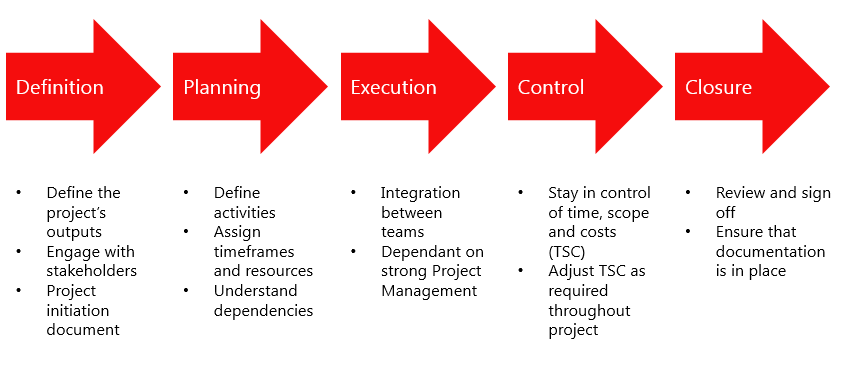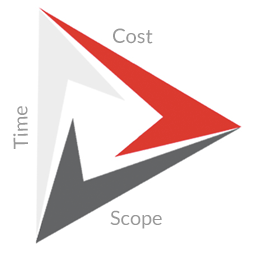Every project has different success factors, but there are a number of steps – applicable to almost any project – that you can take to help ensure project success.
In previous blog posts we’ve discussed, in various levels of detail, a number of fundamental principles around project management. Blogs on the project management triangle and the five stages of a project especially have provided a grounding on what project management is and why it is so important.
For this latest blog post we’re going to build on these principles and take a broader look at what makes a project successful. Here, for your consideration, are our six steps to project success.
Step One: Gain Stakeholder Commitment
Successful project delivery can often seem like an uphill struggle. It can be made significantly less painful with the commitment and engagement of stakeholders. Imagine you’re the captain of a football team and you want to win a match. You need all of your teammates working together; it won’t do if half the team are playing for a draw. Everyone needs to be pushing towards the same goal, and it’s no different with a project. Agreeing the goal – or scope – is equally important, though, and it’s our step two.
Step Two: Fully Define Project Scope
Remember the project management triangle of time, scope and costs? In many ways scope is the most important factor of a project: it’s what you’re aiming to achieve, after all. Comprehensively defining a project’s scope – and ensuring that the scope is understood and agreed by all stakeholders – from the outset and throughout a project is essential to its successful delivery. How can you hope to achieve something if you don’t fully understand what it is you’re trying to achieve?!?
Step Three: Communicate Effectively
The importance of effective communication cannot be over-stated. Ensuring that teams and individuals keep other stakeholders appraised of their progress – both in terms of the successful completion of phases and any issues that arise – is an essential element of project delivery, especially in the execution phase.
Step Four: Carry Out Continual Reviews
A review can be scheduled daily, weekly or fortnightly, or it can be ad hoc. It can take the form of a conference call, a roundtable meeting, or a shared document discussed over web conference. However a review is carried out, it needs to happen: regular reviews allow stakeholders to communicate effectively (as in step three) and enable the project manager to retain control of the project, making adjustments for potential changes in time, scope and costs, which we’ll address in step five.
Step Five: Control Scope Creep
If you lose control of scope creep – where the scope of a project gradually shifts over its course – the entire project can be compromised. The project scope that had initially been agreed by stakeholders during the definition and planning phases can and often does change due to variables out of the project manager’s control. By working in-line with the project management triangle, communicating effectively and carrying out continual reviews, you can control scope creep and ensure that even if the scope of a project does change, you remain on course for the successful closure of the project.
Step Six: Close and Document
The successful closure of a project requires review and sign-off by stakeholders, as well as documentation of the changes that have been implemented. The organisation needs to understand how the project’s scope affects ‘business as usual’ working practices, and – should issues arise following the completion of the project – thorough documentation will support analysis and remediation.
In this blog post we’ve provided guidance on six steps to project success. These aren’t so much essentials as they are best practice guidelines, but we believe that they contribute towards the successful delivery of projects of all scopes and sizes. To learn more about our principles of project success, feel free to get in touch with us.


